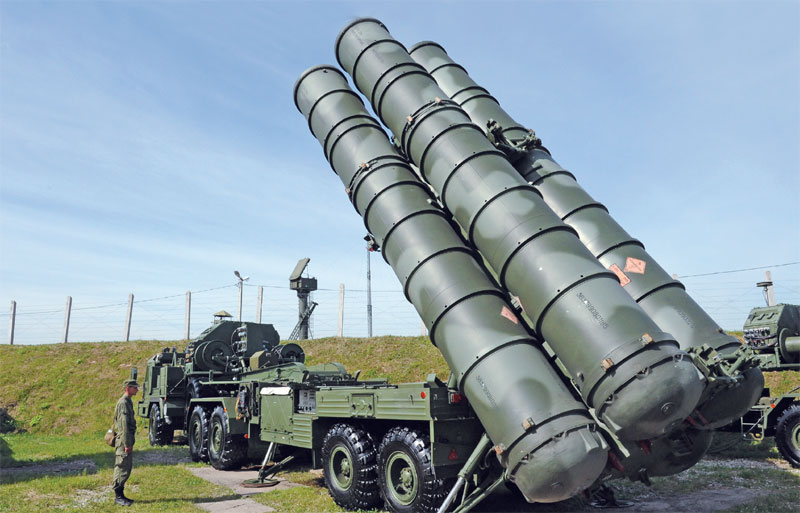The evolving landscape and criticality of ground-based air defence
 Maj. Gen. Atanu Pattanaik (retd)
Maj. Gen. Atanu Pattanaik (retd)
At about 6:30 am local time (4:30 a.m. GMT) on 7 October 2023, almost exactly 50 years and a day after the Yom Kippur War began on 6 October 1973, Palestinian group Hamas fired a huge barrage of rockets across southern Israel. Hamas said it had fired 5,000 rockets in a first barrage though Israel’s military estimates that possibly around 2,500 rockets were fired. A significant number of the Hamas missiles penetrated Israeli defences, inflicting extensive damage and casualties. Smoke billowed over residential Israeli areas and people sheltered behind buildings as sirens sounded overhead. At least one woman was reported killed by the rockets.
Since its formation as a nation-state in 1948, Israel has lived under constant threat of attack from hostile neighbours. Vigil is at the utmost, including a seemingly impregnable Blue Line protecting its northern borders with Lebanon and a barrier wall fortified with watch towers separating it from the occupied West Bank and Gaza Strip. Drones, satellites and the famed air defence system Iron Dome protect it from intermittent rocket or drone attacks launched by Hamas or other groups such as Islamic Jihad and sometimes by Hezbollah who dominate South Lebanon. Israel has at least 10 Iron Dome batteries in operation, each containing 60 to 80 interceptor missiles. Each of those missiles costs about USD 60,000. In previous attacks involving smaller numbers of missiles and rockets, Iron Dome was 90 per cent effective against a range of threats.
So, why was the system less effective against the October 7 Hamas attacks?
It is a simple question of numbers. Hamas fired several thousand missiles, and Israel had less than a thousand interceptors in the field ready to counter them. Even if Iron Dome was 100 per cent effective against the incoming threats, the very large number of Hamas missiles meant some were going to get through. The Hamas attacks illustrate very clearly that even the best air defence systems can be overwhelmed if they are overmatched by the number of threats they have to counter.
The Hamas attack will have repercussions for all of the world’s major military powers. It clearly illustrates the need for air defence systems that are much more effective in two important ways. First, there is the need for a much deeper arsenal of defensive weapons that can address very large numbers of missile threats. Second, the cost per defensive weapon needs to be reduced significantly.
Against the backdrop of this dramatic and most spectacular attack by Hamas, let us understand and evaluate the issues of air threats and more specifically, ground-based air defence systems that can neutralise and counter these airborne threats in real-time.

Evolving Threat from the Skies
Mentions of threats from the skies exist from ancient times, from Indra’s Vajra as mentioned in the Rig Veda and Puranas of Hindu mythology to the thunderbolts of the Greek sky god Zeus or the sky god Marduk (Bel) in Sumerian cosmology and the sky god Perun in Slavic mythology. Along with threats, there is also the chronology of protection from those threats from above, such as the Brahmadanda, a weapon of self-defence, created by Brahma. It was only to be possessed by Brahmanas and its powers were dependent on its owner. The weapon was a rod capable of absorbing any incoming attack towards its owner. When Vishwamitra, in a fit of anger, unleashed the Brahmastra onto Vasishtha, it was his Brahmadanda that protected him from the lethal weapon.
Mythology remained what it is, myths, till man took to the skies. Beginning with World War I, as aircraft and missile technologies evolved, so too have the strategies and systems designed to defend against them. Systems for ground-based air defence are essential to a nation’s defence. These are the sky’s goalkeepers. While the term ground-based air defence (GBAD) broadly includes things like barrage balloons, camouflage and jammers, most ‘active’ GBAD systems aim to destroy aerial targets through the use of either missiles or shells.

Ground-Based Air Defence Systems
An air defence system consists of three key components. First, there are radars to detect, identify and track incoming missiles. The range of these radars varies. Once an object has been detected by the radar, it must be assessed to determine whether it is a threat. Information such as direction and speed are used to make this determination. The second major element of an air defence system is the battle control centre. This component determines the appropriate way to engage a confirmed threat. It uses continually updating radar information to determine the optimal response in terms of from where to fire interceptor missiles and how many to launch against an incoming missile. The third major component is the interceptor missile itself.
There are mainly three ranges in which the air or missile defence system can be categorized: Long-Range Air Defence (LRAD) system, Medium-Range Air Defence (MRAD) system and Short-Range Air Defence (SHORAD) system. The secret to achieving truly effective air defence is to use these different systems in concert with other technologies to create layered aerial defence.
Long-Range Air Defence: Long-range or strategic missiles travel seven kilometres per second. The geographic range of such missiles is regional as well as national. Russia’s A-135 and the ground-based midcourse defence system of the US are two noted and most destructive long-range air defence systems in use. India has its own Ballistic Missile Defence Program which is a double-tiered system consisting of two land and sea-based interceptor missiles, namely the Prithvi Air Defence (PAD) missile for high altitude interception, and the Advanced Air Defence (AAD) missile for lower altitude interception. PAD has an operational range between 300 and 2000 kilometres and can intercept at an altitude of up to 80 kilometres. The PAD is quick enough to target intermediate-range ballistic missiles with a top speed of over Mach 5. The AAD on the other hand has an operational range of 150 to 200 kilometres and can go as fast as Mach 4.5 and is made to intercept incoming ballistic missiles at a height of 30 kilometres intended for targets that somehow pass through PAD.
Medium Range Air Defence: Such missiles travel three kilometres per second and target mid-range missiles. MRAD is also called a theatre system since it covers a radius of around 100 kilometres. THAAD (Terminal High Altitude Area Defense), S-400, and Arrow missile are well-known MRADs in use by the US, Russia and Israel respectively. India has already inducted a few batteries of S-400 and more are on the way.
You must be logged in to view this content.

